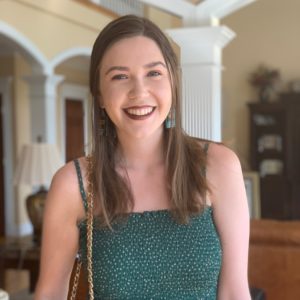Young adults with rare diseases all have unique experiences; in recognition of Rare Disease Day, we call upon advocates everywhere to help in the advancement of equitable access to care.

Courtney Felle, Patient Engagement Fellow at the EveryLife Foundation for Rare Diseases
Contributor: Courtney Felle (she/they), a former Anthem Lex Frieden Intern, is the Patient Engagement Fellow at the EveryLife Foundation for Rare Diseases and coordinates the Young Adult Representatives of RDLA (YARR) program. They are a recent graduate of Kenyon College, where they majored in Health, Illness, and Disability Studies. They have previously worked with the American Association of People with Disabilities, the Administration for Community Living, Anthem, Inc., and more. They live and thrive with Ehlers-Danlos Syndrome, among other conditions.
Throughout February, we recognize Rare Disease Month and the estimated thirty million Americans living with rare diseases (NIH). Historically, rare disease awareness has focused on the disproportionately high number of children affected by rare disease. Political action has often centered on children, including issues of earlier access to pediatric clinical specialists, increased family and caregiver support, and newborn screening. All with good reason, as many rare diseases are rapidly progressive, with irreversible and fatal consequences. But what happens to the children who do survive into adolescence and adulthood, still intertwined with rare disease? Where are their voices?
Young adults with rare diseases face their own unique and difficult challenges. Unexpected medical crises, cyclical flare-ups, and regular doctors’ appointments mean constant engagement with healthcare and insurance systems, but young adults may still have a lot of confusion, frustration, and fear in these settings. After all, young adults are still learning how to direct their own medical care, including how to speak with doctors on their own, schedule appointments, understand insurance benefits and personal costs, and stick to treatment plans. But young adults with rare diseases have high stakes, with much room for error, in this learning process.
Between disease symptoms themselves and the many medical appointments needed to manage those symptoms, young adults with rare diseases may often miss significant amounts of each school year. Many teachers and administrators have never heard of their students’ rare diseases before and may place additional strain on young adults who are already struggling. Given the highly individual and fraught nature of receiving accommodations, students with rare diseases often spend extra time, effort, and resources finding and fighting for what they need. Even when students successfully graduate high school, they face extra barriers transitioning to higher education and employment.
At a time in life when most are first learning to navigate financial independence and autonomy, young adults with rare diseases face additional complexities as they consider the availability of paid and family support, proximity to trusted medical care and specialists, accessible housing, and Medicaid and insurance benefit eligibility. Young adults with rare diseases must navigate attempting to make choices and build lives they can take pride in, even as social, political, and economic contexts may significantly constrain the choices available to them.
There is often a real loneliness and social vulnerability that comes with having a rare disease and confronting these added barriers. The ongoing COVID-19 pandemic has exacerbated these experiences. Young adults with rare diseases may feel isolated, scared, and left behind. Many of these young adults have much different relationships to their bodies, acute illness, aging, and mortality than we expect of their life stage, creating a split with the world around them.
These challenges and their relative invisibility make it particularly important for young adults with rare diseases to embrace advocacy.
In 2018, three college students living with rare diseases joined with the EveryLife Foundation for Rare Diseases to establish a community for young adults between the ages of sixteen and thirty. Known as the Young Adult Representatives of RDLA (YARR), the program emphasizes building young adults’ skills, confidence, and opportunities to advocate about what matters most to them.
“Being an advocate means being able to effectively communicate to others who you are, what you need, and how you want those needs met,” explains YARR member Molly McCarthy. Advocacy encompasses how young adults with rare diseases begin to embrace their identities and assert themselves to others, and advocacy grows with practice. It is advocacy when a shy young adult begins explaining more about their rare disease to friends and extended family members, or when a young adult disputes unfair school policies, or when a young adult asks in-depth follow-up questions at a medical appointment.
As young adults develop their perspectives, YARR equips and encourages advocates to take on bigger and more public roles. Each year during Rare Disease Week on Capitol Hill, young adult advocates meet with legislators to discuss important federal policy issues. YARR members speak at EveryLife events, patient conferences, biopharmaceutical learning sessions, and more. YARR members start advocacy and affinity organizations at their colleges and build community networks. Especially through the YARR Leadership Academy, which mirrors a certificate program for highly involved young adults, YARR members prepare for powerful patient advocate roles on consumer review panels, drug utilization review boards, pharmacy and therapeutics committees, and nonprofit boards. And through all their advocacy, YARR members make us aware of their own unique and difficult challenges, and they propose inventive, compelling solutions.
Young adults with rare diseases have an immense amount of knowledge and passion, and they are ready to make their way in the rare disease community and in the world. During this Rare Disease Month, let us recognize and support all their accomplishments—present and future.

